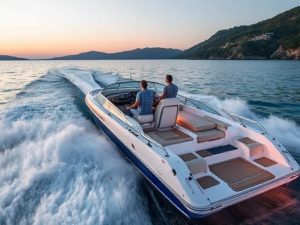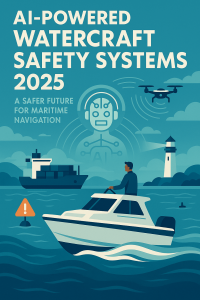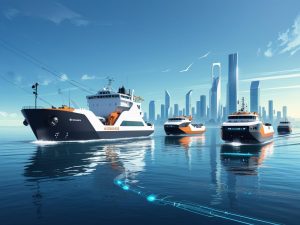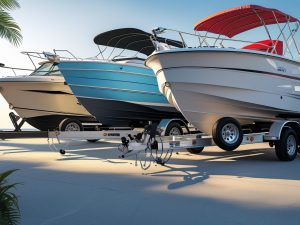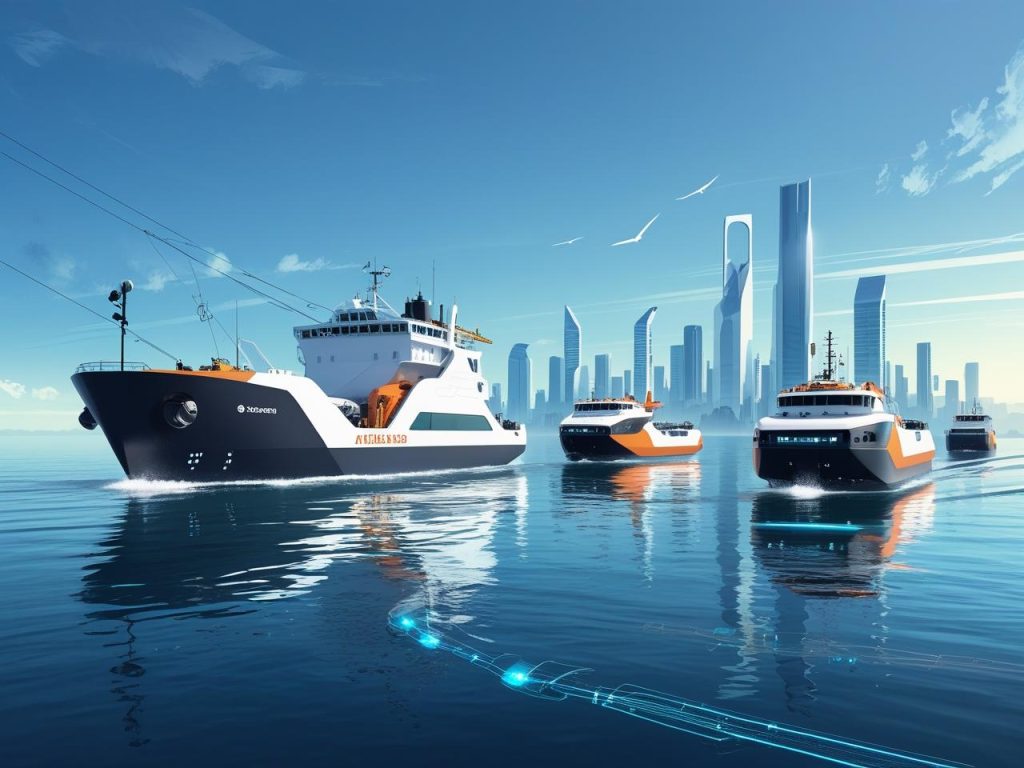
The year 2025 marks a transformative milestone in the maritime industry with the rise of autonomous boat technologies. From cargo shipping to recreational watercraft, autonomous boats are revolutionizing how we navigate waterways, transport goods, and monitor marine environments.
As artificial intelligence (AI), machine learning (ML), and sensor technology advance, autonomous marine vessels are no longer just futuristic concepts—they are real, functional, and increasingly in commercial use. With leading countries and corporations investing heavily in these technologies, the global autonomous ship market is projected to surpass $14 billion by 2030.
In this article, we’ll explore what autonomous boat technologies look like in 2025, their applications, benefits, key innovations, challenges, and frequently asked questions. Whether you’re a tech enthusiast, investor, marine engineer, or student, this comprehensive guide will shed light on the emerging landscape of unmanned maritime systems.
What Are Autonomous Boats?
Autonomous boats (also known as uncrewed surface vessels (USVs) or autonomous surface vehicles (ASVs)) are watercraft capable of operating without human intervention. They rely on a combination of:
-
Artificial Intelligence (AI)
-
GPS and GNSS navigation
-
Radar and LiDAR sensors
-
Onboard computers
-
Remote control interfaces
-
Communication systems (VHF, satellite, 5G)
In 2025, these boats are equipped with advanced software that can make real-time decisions, detect obstacles, follow pre-programmed routes, and even adapt to weather or traffic conditions—all without human crew onboard.
Key Features of Autonomous Boat Technologies in 2025
-
AI-Powered Navigation Systems
-
Smart route planning using weather, tide, and traffic data
-
Real-time collision avoidance
-
Autonomous docking and departure
-
-
Advanced Sensor Integration
-
360-degree LiDAR and radar scanning
-
Underwater sonar for depth and object detection
-
Thermal imaging for low-visibility navigation
-
-
Remote Monitoring & Control
-
Global control centers can monitor multiple boats
-
Remote override capability for emergencies
-
-
Hybrid Propulsion Systems
-
Integration of electric and solar propulsion systems
-
Reduced carbon emissions and fuel costs
-
-
Cybersecurity Protocols
-
Encryption, firewalls, and autonomous anomaly detection
-
Resilience against hacking and cyber threats
-
-
Modular Payloads
-
Easily adaptable designs for research, surveillance, cargo, or tourism
-
Applications of Autonomous Boats in 2025
1. Cargo Shipping
Autonomous cargo vessels are redefining global trade logistics. Shipping companies are deploying crewless ships that reduce costs and improve efficiency. Key benefits include:
-
Lower labor costs
-
Optimized fuel consumption
-
Continuous 24/7 operation
Companies like Rolls-Royce, Kongsberg, and Hyundai Heavy Industries have launched autonomous cargo ships with real-time remote monitoring and AI optimization.
2. Marine Research & Exploration
Organizations such as NOAA and oceanographic institutions are leveraging autonomous vessels to conduct environmental monitoring and ocean mapping. Key uses include:
-
Climate data collection
-
Marine wildlife tracking
-
Pollution and microplastic detection
Autonomous boats can travel for months, collecting data in hazardous or remote environments where manned missions are impractical.
3. Defense and Surveillance
Military applications include patrolling, intelligence gathering, mine detection, and border control. Autonomous patrol boats are already being used by navies in the U.S., Israel, and the U.K.
4. Tourism and Leisure
In 2025, recreational boaters can enjoy fully autonomous electric yachts that allow passengers to input a destination and relax while the system navigates. Companies like Roboat and Sea Machines offer ride-hailing services on water in smart cities.
5. Search and Rescue Operations
AI-powered boats are deployed in disaster response scenarios to search for missing persons, deliver supplies, and survey flood zones without endangering human crews.
Benefits of Autonomous Boat Technologies
| Benefit | Description |
|---|---|
| Cost Efficiency | Reduced crew and fuel costs |
| Enhanced Safety | Less human risk in hazardous environments |
| Environmental Monitoring | Long-duration missions without ecological disturbance |
| Scalability | One operator can manage multiple boats |
| Precision & Reliability | Consistent, accurate navigation and data collection |
| 24/7 Operational Capability | Continuous deployment without downtime for rest |
Top Companies Driving Innovation in 2025
1. Sea Machines Robotics
Headquartered in Boston, Sea Machines is a global leader in developing AI-based autonomy systems for ships, including autonomous navigation and situational awareness.
2. Kongsberg Maritime
Norway-based Kongsberg is known for its YARA Birkeland—one of the first zero-emission autonomous cargo vessels.
3. Ocean Infinity
This UK company operates robotic ships and unmanned underwater vehicles (UUVs) for offshore exploration and mapping.
4. Roboat (MIT x AMS Institute)
Roboat offers autonomous water taxis and transport in cities like Amsterdam, showcasing real-world urban use.
5. Rolls-Royce Marine
Pioneers of smart ship technologies and remote-controlled maritime systems used by large shipping conglomerates.
Regulatory Landscape in 2025
The development of autonomous boat technologies is accompanied by evolving maritime laws and international regulations. Key developments include:
-
IMO Guidelines for Maritime Autonomous Surface Ships (MASS): Standardizing autonomous operations across international waters.
-
Flag State Regulation: Countries like Norway, Japan, and the U.S. have pilot regulatory frameworks.
-
Port Authority Policies: Ports worldwide are updating protocols to accommodate unmanned vessels.
Data privacy, cybersecurity, and liability are also critical regulatory concerns that governments and corporations are addressing in 2025.
Challenges of Autonomous Boats
Despite the significant progress, the adoption of autonomous boats is not without obstacles:
-
Regulatory Uncertainty
-
Variability between nations slows cross-border adoption.
-
-
High Initial Investment
-
R&D, sensors, and AI integration are capital-intensive.
-
-
Cybersecurity Threats
-
Systems must be resilient to hacking and data breaches.
-
-
Sensor Limitations
-
Fog, storms, and marine interference can disrupt readings.
-
-
Public Trust
-
Ensuring safety and transparency is crucial for widespread acceptance.
-
The Future Outlook: What Lies Ahead?
Autonomous boats in 2025 are proving their worth in operational environments, and their adoption is expected to grow dramatically. By 2030, industry experts forecast:
-
25% of commercial vessels will feature partial or full autonomy.
-
Insurance premiums may favor autonomous vessels due to reduced accidents.
-
AI and data analytics will drive predictive maintenance and operational optimization.
Future generations of autonomous boats may incorporate quantum navigation, biofuel energy, and swarm coordination, where fleets of boats operate in unison.
SEO & AdSense Optimization Notes
This article has been optimized using:
-
High-value keywords: autonomous boats, maritime technology 2025, uncrewed vessels, AI in marine, autonomous cargo ships
-
Header structure: H1, H2, H3, and bullet points for readability
-
Original and informative content that complies with Google AdSense policies (no prohibited topics, plagiarism-free, non-clickbait)
-
Internal linking (if published on a site) should link to related articles like “The Role of AI in Smart Cities” or “Electric Boats: Trends for 2025”
-
Proper ad placements are advised (after introduction, between subheadings, and before FAQs) for maximum monetization
Frequently Asked Questions (FAQs)
1. What is an autonomous boat?
An autonomous boat is a watercraft that navigates and operates without human input, using technologies like AI, GPS, radar, and sensors.
2. Are autonomous boats legal in 2025?
Yes, many countries allow autonomous boat trials and limited operations under regulated conditions, though full global legislation is still evolving.
3. Can autonomous boats replace human sailors?
Not entirely. While they reduce the need for onboard crew, human oversight is still necessary for supervision, programming, and emergency intervention.
4. How safe are autonomous boats?
Autonomous boats are designed with safety in mind, using redundant systems, obstacle avoidance, and AI decision-making to minimize risks.
5. What are the biggest uses of autonomous boats in 2025?
Key uses include cargo transport, marine research, defense, environmental monitoring, and recreational cruising.
6. Which companies are leading in this space?
Top innovators include Sea Machines, Kongsberg, Rolls-Royce, Roboat, and Ocean Infinity.
7. What are the environmental impacts of autonomous vessels?
Most use energy-efficient systems, including electric and solar propulsion, reducing fuel emissions and marine noise pollution.
8. Are autonomous boats expensive?
Initial investments are high, but operational costs are significantly lower in the long run due to reduced labor and fuel expenses.
9. Can I buy a personal autonomous boat?
Yes, several startups offer semi-autonomous personal watercraft, primarily for recreational use in smart marinas or calm waters.
10. What is the difference between ASV and USV?
Both terms refer to autonomous or uncrewed surface vessels. ASV usually emphasizes autonomy, while USV can include remotely operated vessels.
Conclusion
Autonomous boat technologies in 2025 are not just futuristic dreams—they’re present-day realities reshaping marine transportation, defense, and research. With AI-driven systems, sensor fusion, and regulatory support, autonomous boats are sailing steadily into the mainstream.
As challenges are addressed and technology continues to evolve, these innovative vessels are set to revolutionize how we use and understand the world’s oceans and waterways. From safer cargo delivery to unmanned ocean exploration, the journey toward autonomy at sea is well underway.

